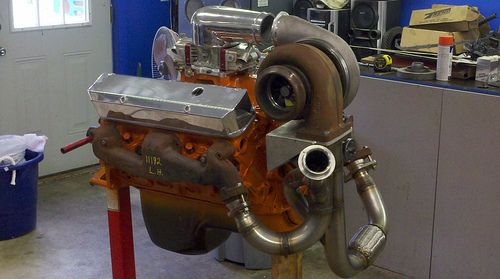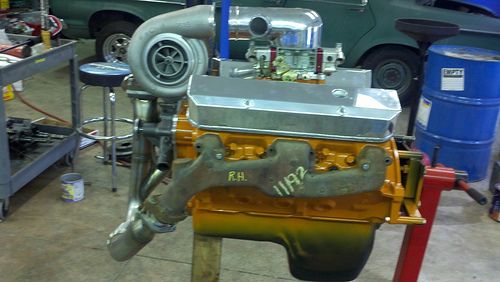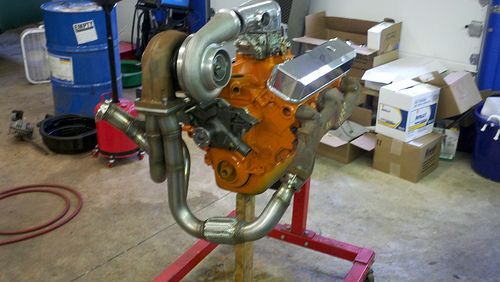Mad Dart:
100f charge temps are not a reasonable design target, unless you only plan to drive the car on 40 degree mornings. Heck, around here I can't even get 100f intake air for half the year.
Intercoolers are only so efficient, and compressors all heat the air. Charge air temps in the 160 to 180 range are not unreasonable. It is not like the density issue with an aspirated engine. Running more fuel helps, as does using the heat of vaporization to reduce charge temperature.
Very few engines with Roots blowers have any sort of intercooler, and they do just fine. The ricer crowd with huge turbos on 1.6L bangers with intercoolers the size of the hood have distorted the picture of what is necessary.
7 duce:
The oil return on a turbocharger is important. It must enter the engine above the oil level in the pan, and have enough slope to drain well. Typically we use a line with a 1/2" or larger bore, like a dash 10 AN line. On a 318 I would return the oil in to the front cover.
The turbocharger bearing is fed pressurized engine oil from the oil system with a small oil line (dash 4) and is metered with an orifice. Usually about a .025 to .045 hole. The oil feeds the bearings & cools the shaft assembly. The very high shaft speed tends to whip the oil in to foam, which is the reason for the large return line.
Water cooled units have a water passage in the center section as well as the oil feed to the bearings. Water cooling can help with bearing life, especially in passenger cars that get shut off after a hard run with no cool down for the turbocharger.
B.
100f charge temps are not a reasonable design target, unless you only plan to drive the car on 40 degree mornings. Heck, around here I can't even get 100f intake air for half the year.
Intercoolers are only so efficient, and compressors all heat the air. Charge air temps in the 160 to 180 range are not unreasonable. It is not like the density issue with an aspirated engine. Running more fuel helps, as does using the heat of vaporization to reduce charge temperature.
Very few engines with Roots blowers have any sort of intercooler, and they do just fine. The ricer crowd with huge turbos on 1.6L bangers with intercoolers the size of the hood have distorted the picture of what is necessary.
7 duce:
The oil return on a turbocharger is important. It must enter the engine above the oil level in the pan, and have enough slope to drain well. Typically we use a line with a 1/2" or larger bore, like a dash 10 AN line. On a 318 I would return the oil in to the front cover.
The turbocharger bearing is fed pressurized engine oil from the oil system with a small oil line (dash 4) and is metered with an orifice. Usually about a .025 to .045 hole. The oil feeds the bearings & cools the shaft assembly. The very high shaft speed tends to whip the oil in to foam, which is the reason for the large return line.
Water cooled units have a water passage in the center section as well as the oil feed to the bearings. Water cooling can help with bearing life, especially in passenger cars that get shut off after a hard run with no cool down for the turbocharger.
B.



















